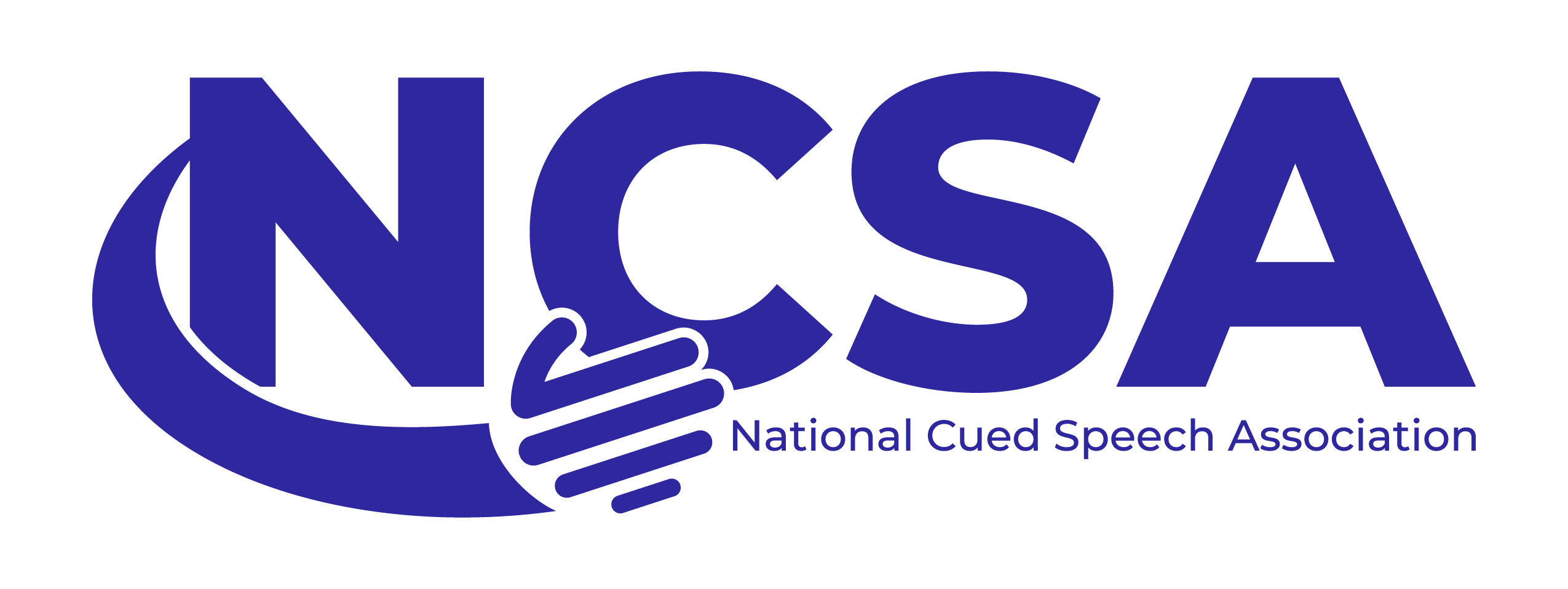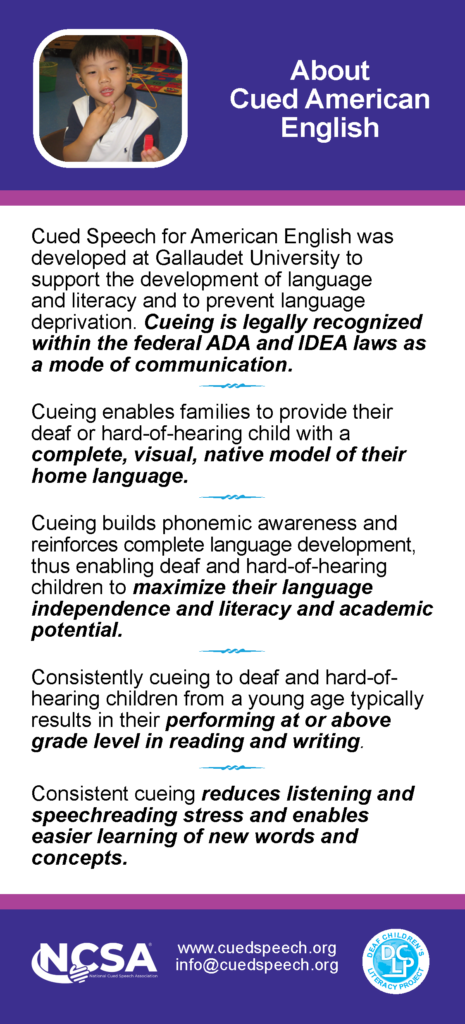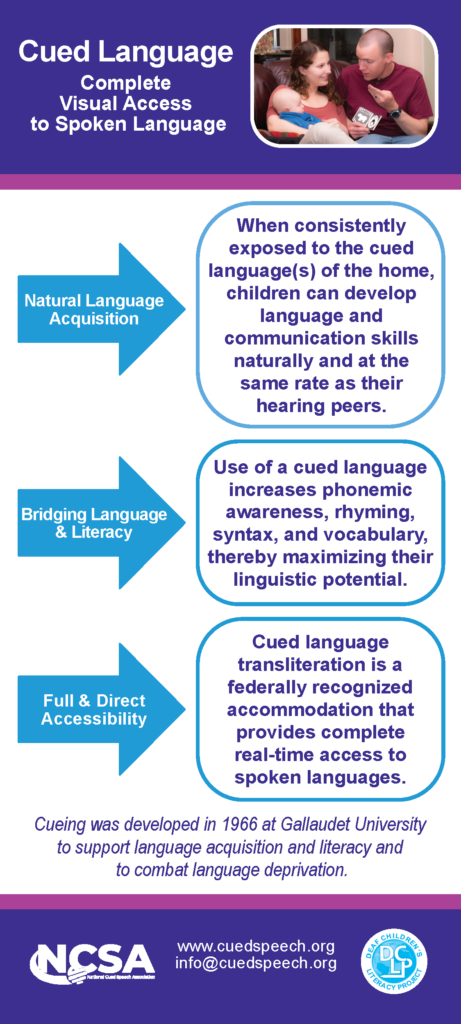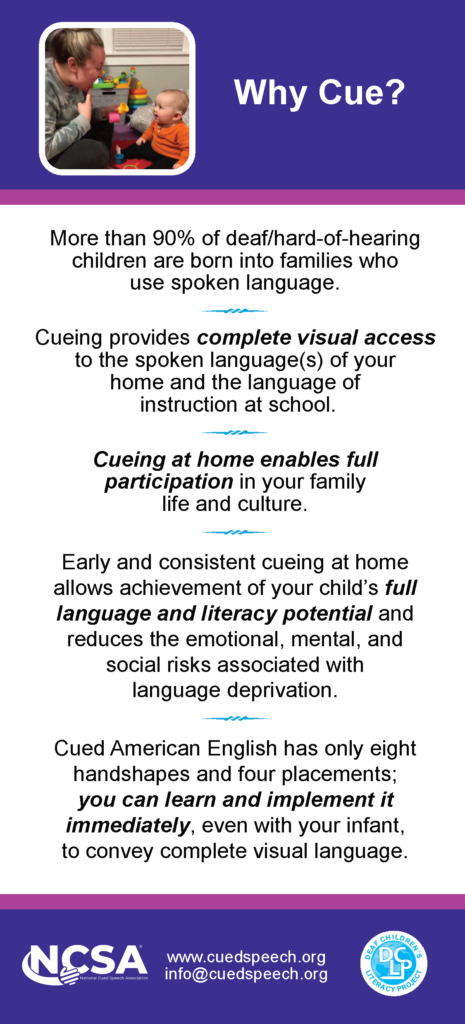The entire Cued Speech system is typically taught in 8-12 hours of classroom time. For many, Cued Speech is easy to learn! Beginners can start with the Cued American English charts [Standard|IPA] and Cue College’s self-paced, online introductory CS100 course.

Anyone who is a family member of a child with hearing loss or another communication challenge can learn the entire Cued Speech system for American English for free by signing up for the Cue College “Cue Family” program. Learn at your own pace using our self-study online course, “CS100 – Introduction to Cued American English” and get a FREE one-year membership to the NCSA. For more information and/or to register for our free Cue Family program, please visit the Cue Family Program site.
Anyone else who wants to learn to cue can visit Cue College and choose to learn via the Cue College CS100 self-study course, our CS101 instructor-led course, and/or our interactive one-on-one Cue Tutor program.
Cued Speech classes are also available via in-person and virtual workshops and camps. Check our Find an Event page for upcoming offerings.
Cued American English Charts
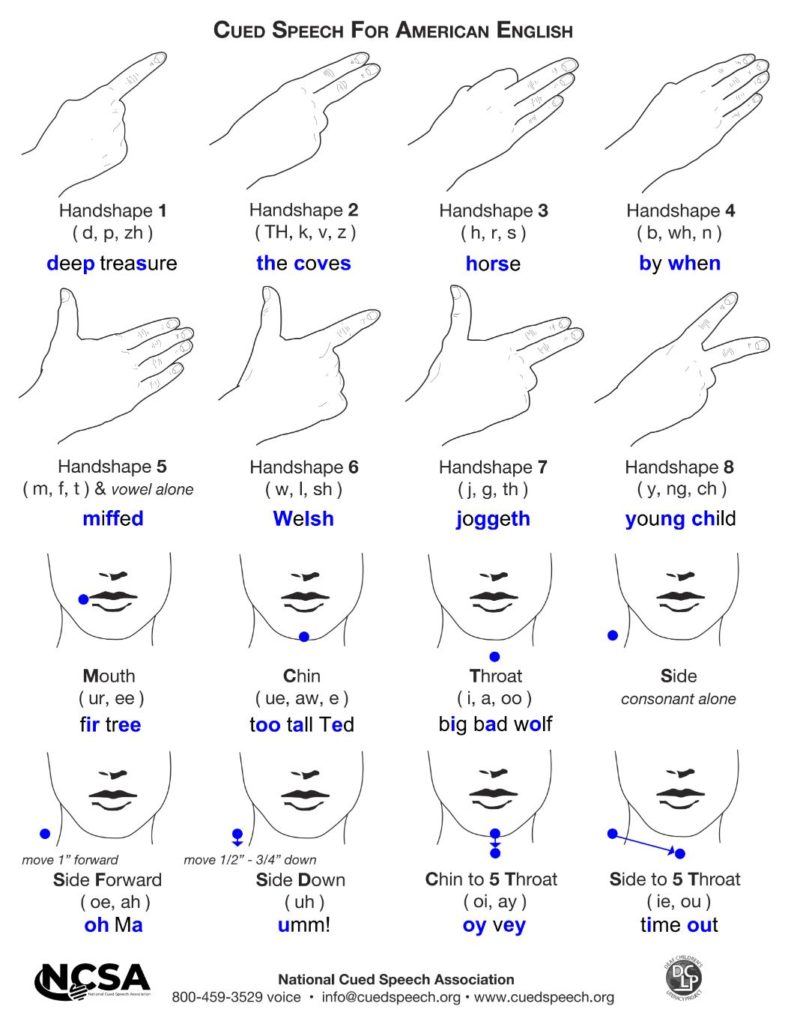
(Standard Version)
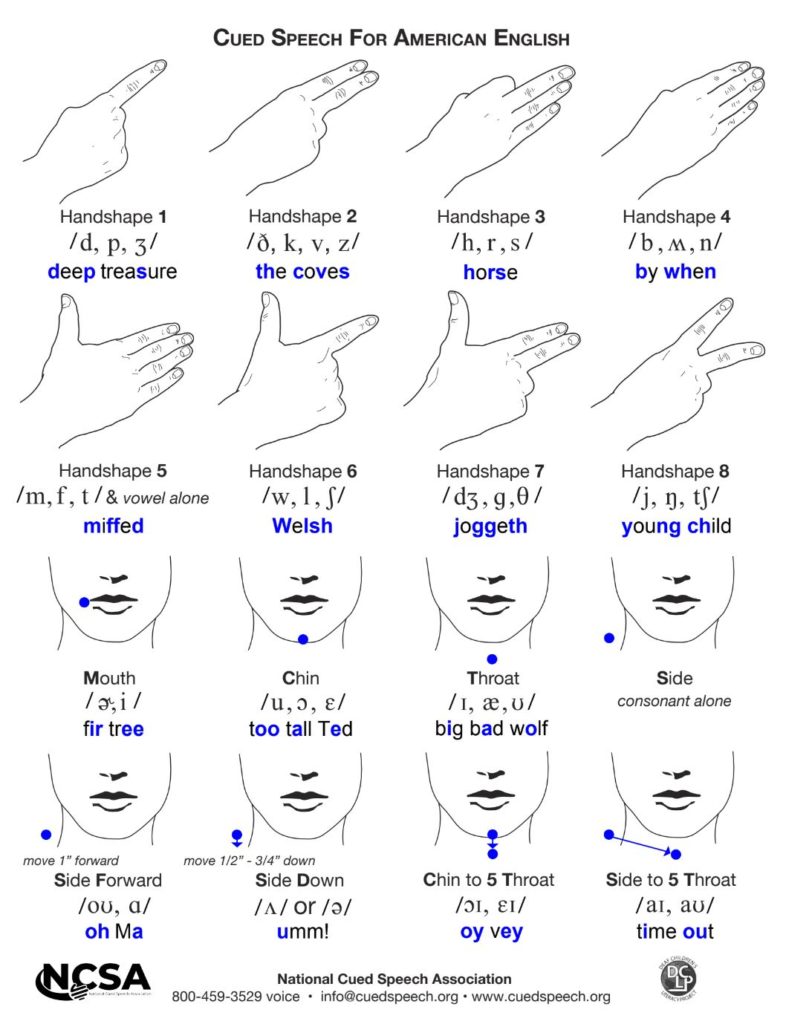
(IPA version)
Download the Cue Charts: Standard Cue Chart | IPA Cue Chart
Rack Cards
The NCSA provides a wealth of information at its exhibit booths, which are often present at national conferences, such as ASHA and EHDI. We have five rack cards. The front of each rack card can be previewed in the gallery below. Click the links to download and view them in their entirety.
Educational Video Series
The National Cued Speech Association provides webinars for interested parents, language professionals, and the general public to learn more about cued language.
Our webinars are available on our new YouTube channel: Find us at @nationalcuedspeechassociation!
Our webinar series includes:
- What Is Cued Speech?
- How Cued Speech Supports Language and Literacy Development
- Using Cued Language in an English-ASL Bilingual Program for Deaf Children
- Visual Supports for Literacy: Comparing Cued Language and Visual Phonics
- The Use of Cued Speech with Children with Disabilities Other than Deafness
